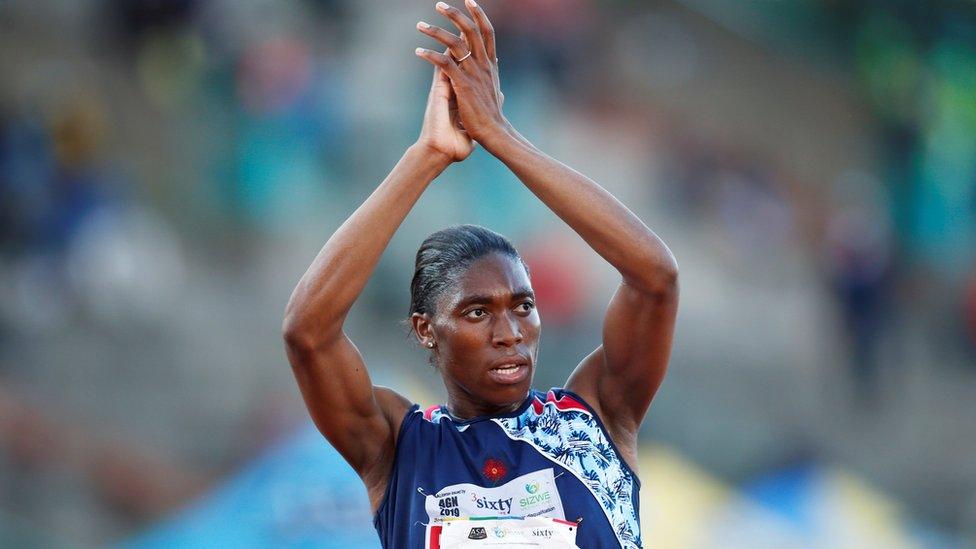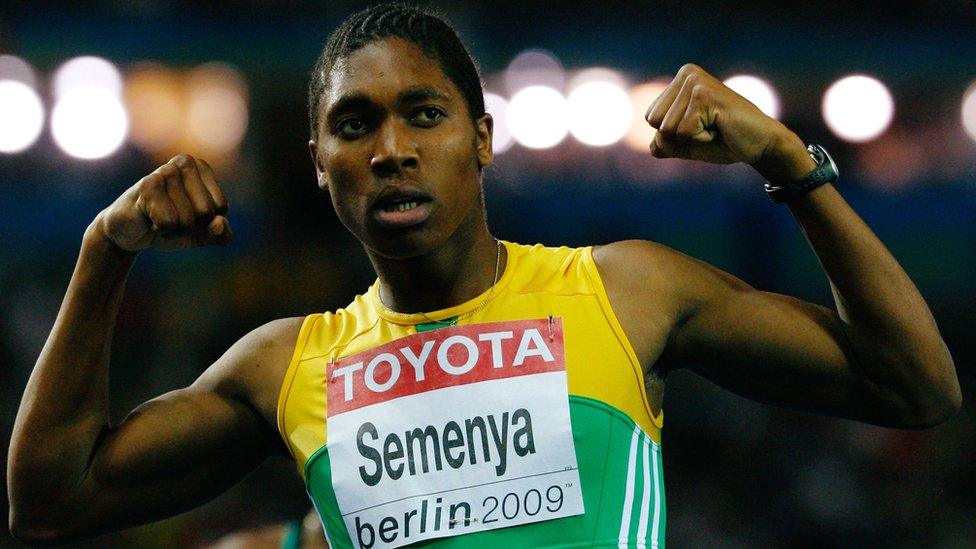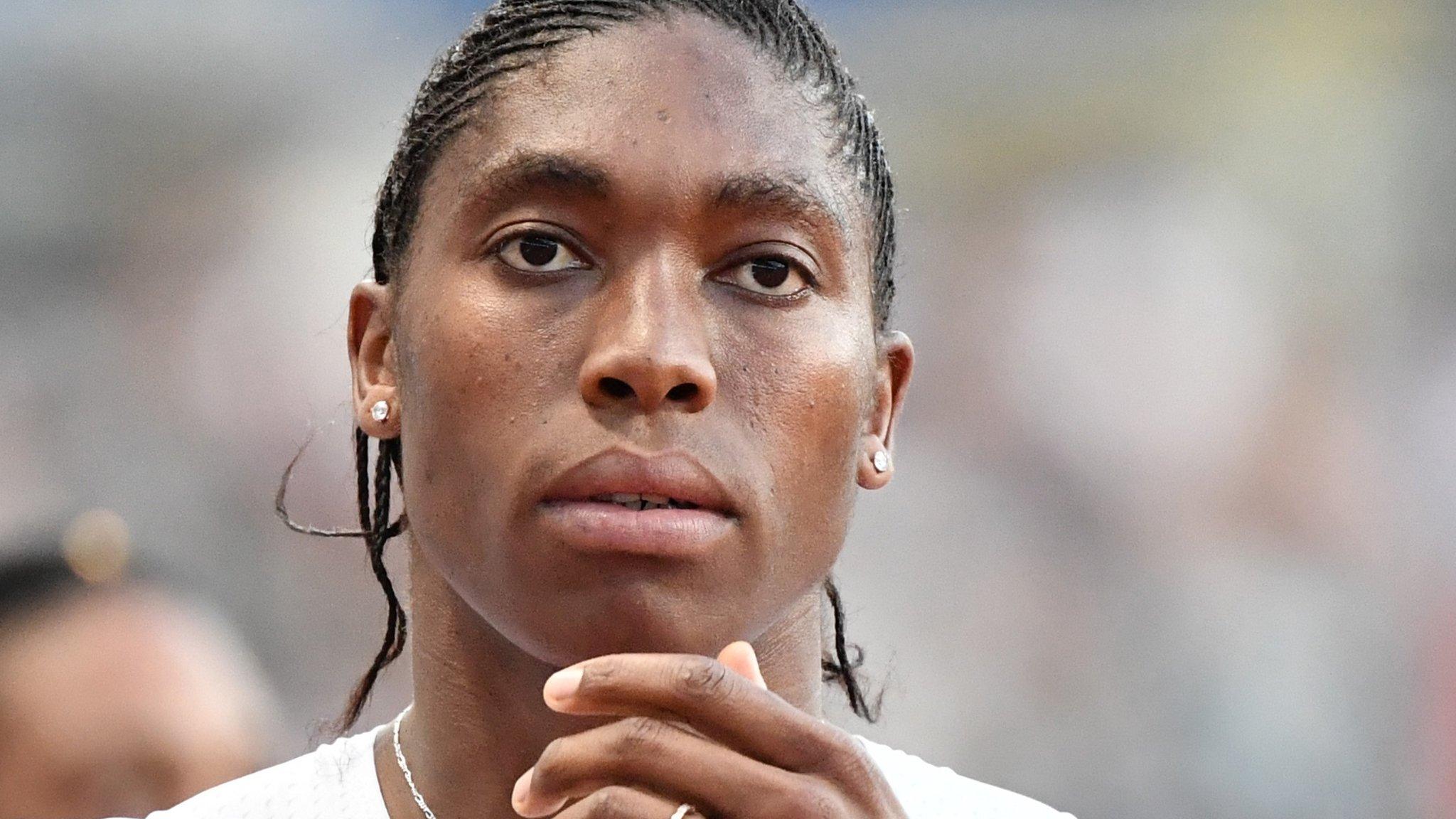What Caster Semenya IAAF discrimination case means for women and sport
- Published

Semenya recently moved up to long distance 5,000m event - a distance that would not require her to lower her testosterone levels
South African athlete Caster Semenya has lost her discrimination case against the International Association of Athletics Federation, which has found that forcing athletes with high levels testosterone to lower them is "discriminatory but necessary".
The 28-year-old Olympian had challenged the IAAF over its decision to restrict testosterone levels in female runners for distances between 400m and a mile.
Semenya, who has won the last 29 of her 800m races, was born with intersex traits - meaning her body produces atypically high levels of testosterone.
The ruling means she will have to take testosterone suppressants if she wishes to compete in these shorter events.
Three sports judges in Switzerland have taken more than two months to reach this verdict - indicating the sensitivity and complexity of the case.
Depending on your point of view, the situation seemed clear-cut - whichever way you want to look at it.
Supporters of Semenya argue that the runner has been penalised for no other reason than the biological traits that she was born with. She has not cheated, or found to be taking performance-enhancing drugs.
Kyle Knight, a researcher in the LGBT rights program at Human Rights Watch said that taking the proposed IAAF testosterone suppressants would be as "humiliating as it is medically unnecessary" for female athletes whose hormone levels are outside accepted boundaries.
And in 2019, the spectrum of identity stretches beyond the binary, say human rights activists. So shouldn't Semenya's physical abilities be celebrated the same way as Usain Bolt's height and Michael Phelps's wingspan are?
The IAAF say that the issue is not personal to Semenya. But the fact that the ruling is over women competing at the distances she runs - and not across all track and field - has led to the suggestion she is being targeted.
But the IAAF insist they are determining boundaries to protect the integrity of sport - particularly women's sport.
IAAF president Lord Sebastian Coe told Australia's Daily Telegraph newspaper: "The reason we have gender classification is because if you didn't then no woman would ever win another title, or another medal, or break another record in our sport."

Semenya has been questioned on her biological make-up since breaking through in 2009
Key to this aspect of the argument are testosterone levels. The IAAF says women who have testosterone levels of over five nanomoles per litre of blood (nmol/l) have a significant performance advantage - and are outliers amongst the overall population of women. In other words, they are not representative of women generally, and this undermines the concept of women's sport.
They therefore say that Semenya should take medication that would lower her testosterone levels to that amount.
But Semenya's team responded by saying: "Ms Semenya does not wish to undergo medical intervention to change who she is and how she was born. She wants to compete naturally."
What happens next is anyone's guess. If testosterone levels are being regulated for women's sport they may also be for men's. Transgender (someone whose own gender identity differs from their assigned sex at birth) athletes have not been discussed in this conversation.
Either way this verdict does not signal the end of the debate.
What is 'intersex'?
"Intersex" is a general term used for a variety of conditions in which a person is born with sexual anatomy that doesn't fit typical definitions of female or male. Doctors define the terms as disorders of sex development.
There are more than 40 variations of intersex traits.
Genitals could be ambiguous at birth, or they may become so at puberty.
The individual may be anatomically or genetically male but appear female - or vice versa.
Hormone function may also vary with individuals.
Sex v gender
Sex is a biological classification and gender has been described as a more social construct pertaining to identity. Intersex traits are biological and therefore refers to sex, not gender identity.
How many intersex people are there in the world?
According to a 2016 report by the UN, between 0.05 and 1.7 percent of children are born with intersex conditions. For the upper level that's roughly the same born with red hair.
- Published1 May 2019

- Attribution
- Published16 December 2024
